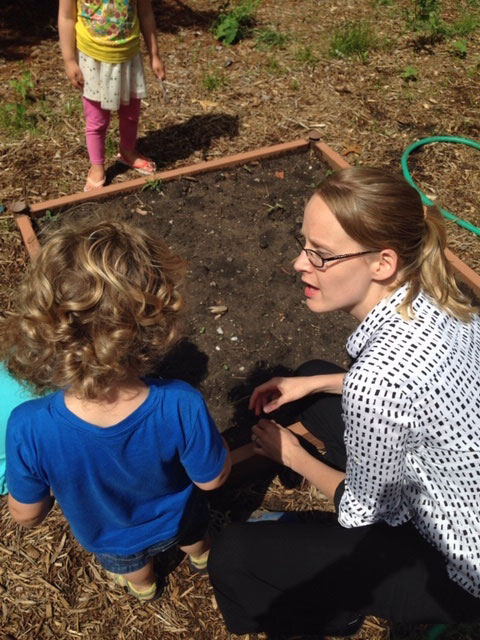
Much attention is paid to the work early childhood teachers do in the classroom. But their tasks away from their students are just as essential to children’s learning and development.
Unlike their K-12 counterparts, early childhood teachers lack dedicated time to address work demands beyond the direct care of children. Without formalized supports, out-of-classroom time may be scarified or interrupted as unexpected issues arise throughout the day.
Erin Hamel, human sciences doctoral student in the Department of Child, Youth and Family Studies, has experienced that time crunch herself, both as a graduate student and classroom teacher.
Now, thanks to a one-year grant from the Buffett Early Childhood Institute’s Graduate Scholars program, she is exploring workplace support of planning/non-contact time — a widely overlooked portion of early childhood teachers’ workdays.
Non-contact time is a teacher’s time away from children that enables them to address other work demands, such as crafting instruction plans, assessing children’s development and communicating with families.
“It occurred to me that we need to know more about what teachers are doing with the time they have,” Hamel said. “Time is a valuable resource we have to budget just like anything else, so we need to figure out how to effectively help directors and teachers allot and manage that.”
Hamel’s dissertation project will assess how much time early childhood teachers actually have away from their students — and how they use that time to address their work. Her research also aims to establish terminology for how to refer to such time in a teacher’s day, and to identify factors and expectations directors consider when allotting teachers’ non-contact time.

“There simply isn’t much out there about planning time in early childhood education,” she said. “I want to know the current state of non-contact time in early childhood education, and hopefully get some information out there to help inform decisions that support teachers.”
With a projected shortage of almost 8,000 early childhood teachers across Nebraska, according to First Five Nebraska, recruitment and retention of educators is crucial. Ensuring supportive working conditions is one key ingredient to retaining those much-needed early childhood teachers — an undervalued profession plagued with high turnover and lower pay.
Hamel’s embedded, mixed-methods research design will survey participating directors and teachers of National Association for the Education of Young Children (NAEYC) programs. Using a publicly available NAEYC database, she randomly selected 650 nationally accredited early childhood programs whose directors will receive requests for their teachers to complete her online survey.
Hamel’s survey asks open-ended questions to get open-ended responses. One example: “Think about the last time you had non-contact time and tell me what you did.”
“I can then follow up with a list of what other teachers did with their non-contact time, and ask them to check what they also do,” she said.
Hamel aims to have her data gathered by the end of 2020, and plans to publish her findings to provide some baseline information on what non-contact time is.
Findings could potentially improve working conditions for early childhood educators, Hamel said, which could bolster the recruitment, retention and professionalization of the early childhood workforce.
Hamel’s faculty mentor is Rachel Schachter, CYAF assistant professor.
